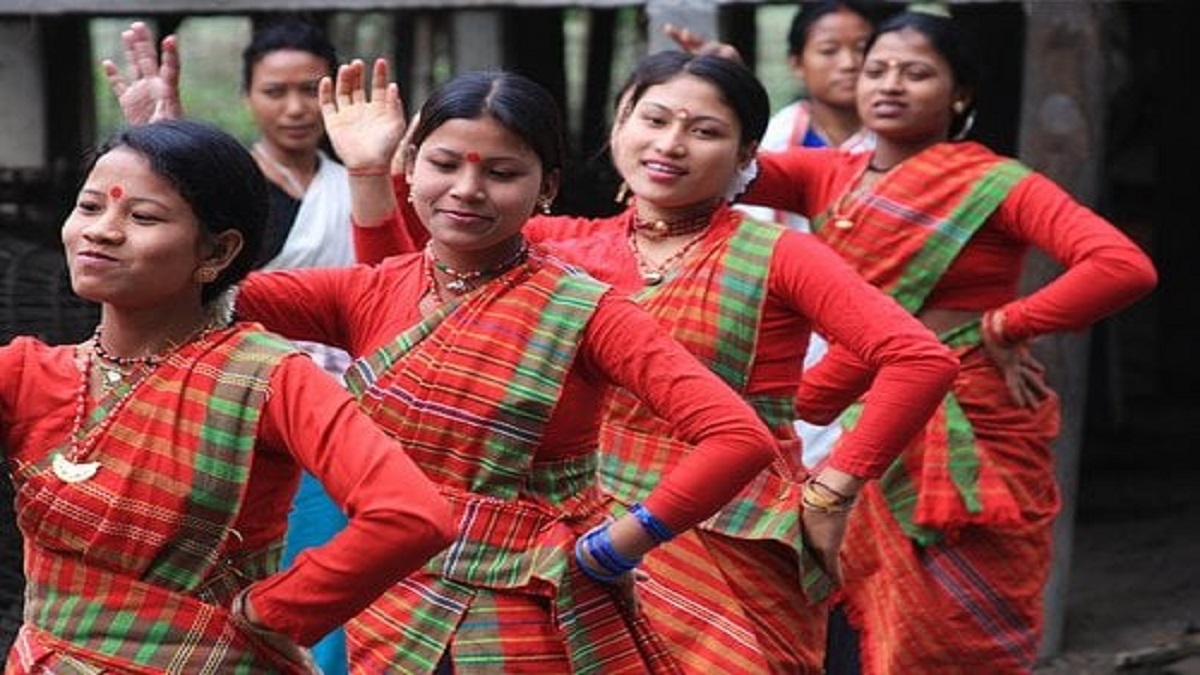The Mising tribe, one of Assam’s largest indigenous communities, recently celebrated the Ali Ai Ligang festival, a significant cultural and agricultural event. Observed on the first Wednesday of the Assamese month of Fagun, the festival marks the beginning of the sowing season. It is deeply connected to the agricultural traditions of the Mising people, who primarily depend on farming for their livelihood.
What is the Significance of Ali Ai Ligang?
Ali Ai Ligang is an important festival for the Mising community, symbolizing the start of a new agricultural cycle. The name itself reflects its meaning—“Ali Ai” refers to seeds, and “Ligang” means sowing. This festival represents the close bond between the Mising people and their land, reinforcing their dependence on agriculture for survival. More than just a farming ritual, it serves as a time for social unity, where the community comes together to celebrate, pray for a good harvest, and pass down traditions to the younger generation.
How is Ali Ai Ligang Celebrated?
The festival begins with a special flag hoisting ceremony called Laitom Tomchar, followed by rituals dedicated to agricultural deities, particularly Donyi Polo, the Sun and Moon gods. The Mising people offer traditional food such as Apong (a rice beer), dried fish, and meat to seek blessings for a prosperous harvest. During this period, certain farming activities like plowing and tree cutting are strictly avoided, as they are believed to disrupt the sacred nature of the festival.
Cultural performances are a central part of the celebration. The Gumrag dance is the highlight of the event, performed by men and women in rhythmic movements that symbolize joy, unity, and prosperity. Traditional songs accompany the dance, narrating daily life, emotions, and ancestral stories. Instruments such as the dhul, taal, gong, and gagana add to the festive atmosphere.
How Has the Festival Evolved Over Time?
Historically, Ali Ai Ligang was celebrated within village boundaries, with families gathering in their local communities. However, in recent decades, the festival has expanded beyond rural areas. Urban celebrations in places like Jorhat have become more common, allowing Mising people who have migrated to cities to reconnect with their roots. Despite these changes, the festival’s core traditions remain intact, preserving its authenticity .
The Mising tribe, which belongs to the Tani ethnic group, primarily resides in Assam and Arunachal Pradesh. As per the 2011 Census, their population in Assam was approximately 680,424. Traditionally a riverine community, they have transitioned from jhum (shifting) cultivation to settled wet paddy farming over time .
The religious beliefs of the Mising tribe are centered around Donyi Polo, a faith that worships the Sun (Donyi) and the Moon (Polo). This spiritual connection influences their agricultural practices and forms the foundation of their cultural identity.
The Ali Ai Ligang festival is not just an agricultural ritual but a symbol of the Mising community’s resilience, cultural pride, and deep-rooted traditions. As it continues to evolve, the festival remains a vital part of their identity, ensuring that their heritage is celebrated and passed on to future generations.
Key Highlights of Ali Ai Ligang Festival
| Aspect | Details |
|---|---|
| Why in News? | The Mising tribe of Assam recently celebrated the Ali Ai Ligang festival, marking the start of the sowing season. |
| Community | Mising Tribe (Largest indigenous community in Assam) |
| Date | First Wednesday of the Assamese month of Fagun |
| Meaning | Ali Ai – Seeds & roots, Ligang – Sowing |
| Significance | Marks the beginning of agricultural activities and reinforces community unity. |
| Rituals | Flag hoisting (Laitom Tomchar), prayers to Donyi Polo (Sun & Moon gods), and food offerings like Apong (rice beer), dry fish, and meat. |
| Cultural Events | Gumrag dance, traditional songs, and musical performances using dhul, taal, gong, gagana. |
| Taboos | No plowing or tree cutting during the festival period. |
| Evolution | Initially a village festival, now celebrated in urban areas like Jorhat while retaining traditional customs. |
| Demographics | Mising tribe population in Assam (2011 Census): ~680,424. |
| Religious Beliefs | Follow Donyi Polo faith (worship of Sun and Moon), influencing their farming and cultural practices. |



 Haryana Assembly Passes Resolution to Co...
Haryana Assembly Passes Resolution to Co...
 Jammu & Kashmir Gets Its First Gen Z...
Jammu & Kashmir Gets Its First Gen Z...
 PM Modi To Inaugurates New Terminal at G...
PM Modi To Inaugurates New Terminal at G...







